Comparison of Minolta Data Savers
This is the first article in the series. More on the subject is available in my continuation article of managing the archival process: Archiving Film - EXIF data matters.
Long ago, just like the dinosaurs, Minolta Expansion and SmartMedia cards roamed the face of the Earth. Now, they are a glimpse of a lost past, rare relics reminding us that titans existed before us.
Data memory cards
Minolta provided several functionality cards called Minolta Creative Expansion Cards introduced in 1988 for the 7000i camera.

There are two variants of the card: Data and Data-2
- Data: Stores exposure data for up to 40 exposures
- Data-2: Stores exposure data for 4 rolls, maximum of 40 exposures (launched with 9xi in 1992)
- Compatible with 7000i/7700i, 8000i/8800i, 5xi, 7xi, 9xi, 700si/707si
- Size: 30 x 20 x 2mm
- Weight: 1.3g
At the end of the things, it is easy to understand why Minolta built the cards in the first place. Partly to conserve technical design implemented into cameras and thus, cost, and while at it, creating an additional revenue stream. Creative Cards gave the illusion of expandable camera, to prolong the expected lifespan of the camera.
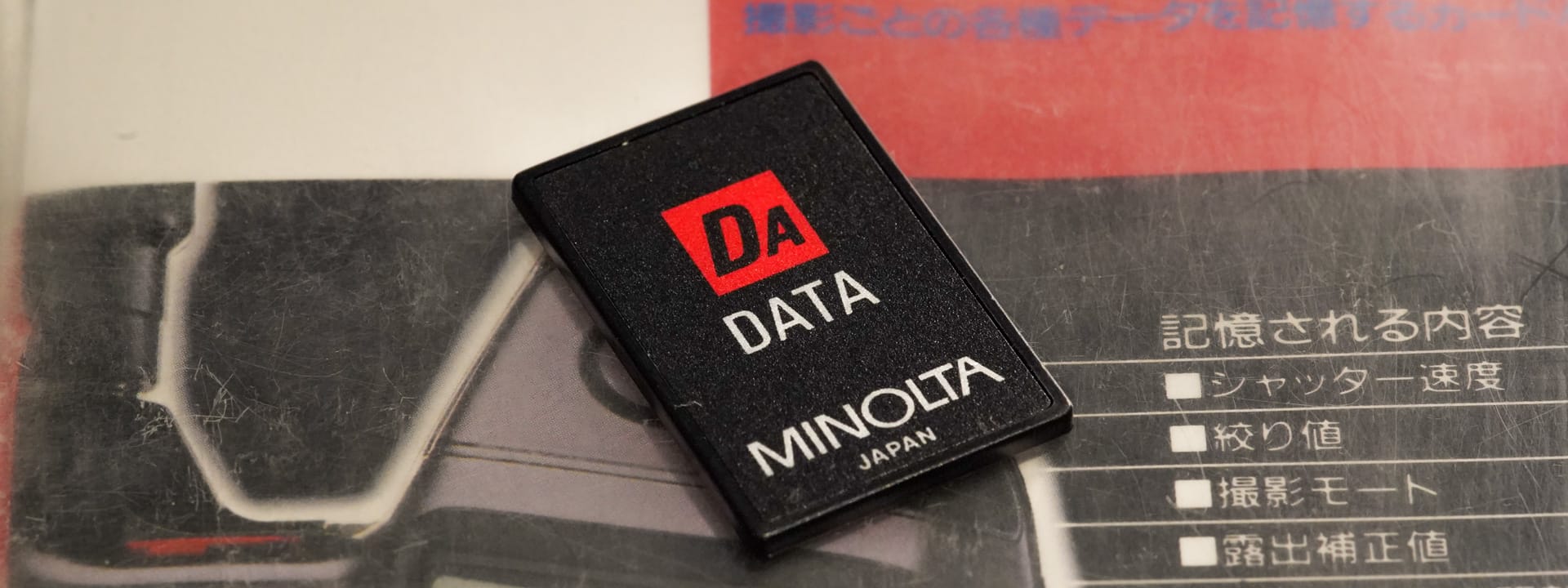
700si (1993) was the last model to support creative cards and already had most of the features built in. Some of the exposure features ended up to Sony’s creative modes in their later digital line up and somewhat also to α7’s STF mode.
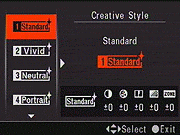
Cards are rarer and rarer to find, and as time passes, their ability to store data will become an issue at a point. Enthusiasts may weep but collectors will hoard the sets regardless of that.
Internal roll memory
Minolta 800si introduced internal roll memory that was later on expanded on later models α7 and α9. 800si had 9 data banks for storing exposure data that it rotated automatically.

Minolta Alpha/Dynax/Maxxum 807si/800si (1997)
800si parameters
- Aperture
- Shutter speed
- Focal length
- Flash on or off
- Exposure compensation on or off
- Exposure compensation value
- Flash exposure compensation on or off
- Bracketing on or off
- Frame number
Minolta 800si / Accessing information
Press "Data" in the 800si's side panel and turning top control dial for selected roll information, to select information press "ADJ." and 800si enters information view.
Switching between views is done via front control dial.
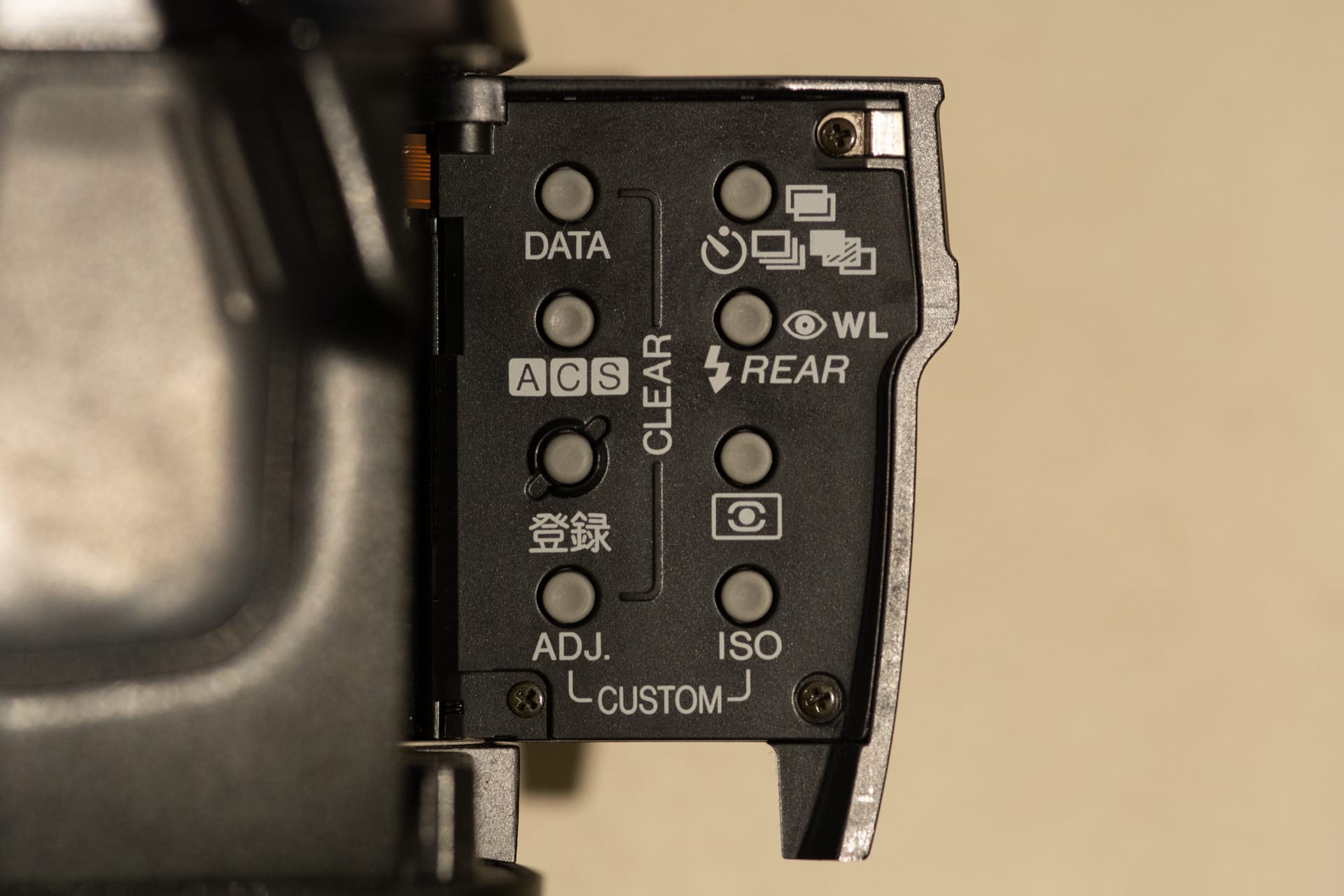
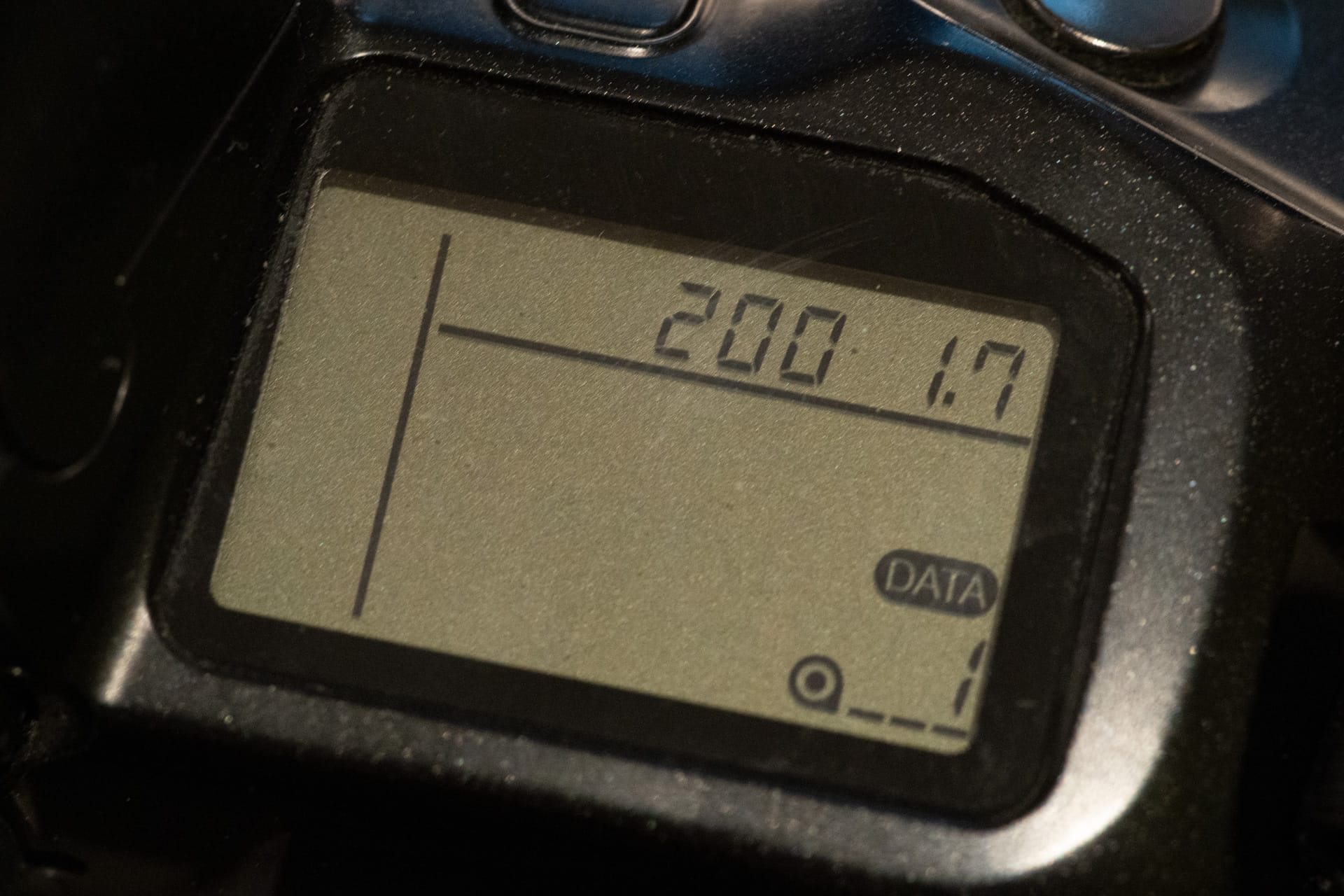

Minolta Alpha/Dynax/Maxxum 9 (1999)
Added parameters
These parameters were added by α9. Camera can store data of up to 7 rolls (vs. 9 on 800si).
- Metering mode (14-Segment Honeycomb Pattern / Center Weighted Average / Spot)
- Exposure mode (P/A/S/M)
Additional parameters are recorded by DM-9 data back accessory, which will be referred later in this article.
Minolta Alpha 9 / Accessing information
Press "Data" in the a9's side panel and turning top control dial for selected roll information, to select information press "ADJ" and a9 enters information view.

Switching between views is done via front control dial or holding AEL button for metering, flash exposure compensation value, and exposure mode (P/A/S/M).


Minolta Alpha/Dynax/Maxxum 7 (2000)
Added parameters
These parameters were added by α7. Camera can store data of up to 7 rolls (vs. 9 on 800si).
- Data number (including body identifier)
- Year/month/date/hour/minute
- ISO value
- Maximum aperture for lens
α7 also writes data identifier to the film leader to identify and match it with recorded data. Data can be extracted from camera using DS-100 Data Saver accessory that will be referred later in this article.
Minolta Alpha 7 / Accessing information
Minolta a7 is the most simple and intuitive to use due to its large information display.
Access data information by opening the little hatch under the display and pressing "DATA". You can select the correct roll by using either control dials or AF focus dial.
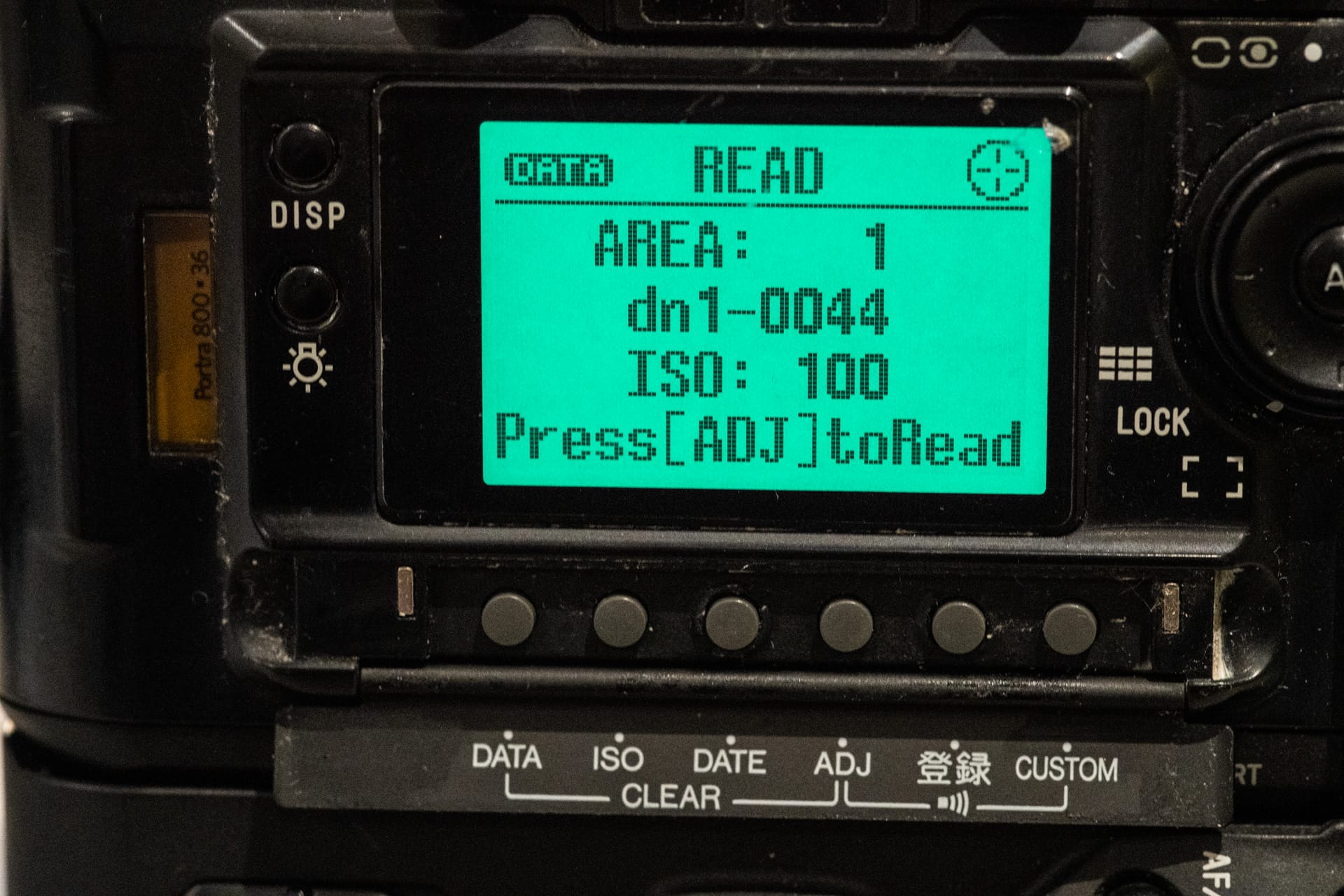
To access roll information, press ADJ as instructed by the camera or AF button.
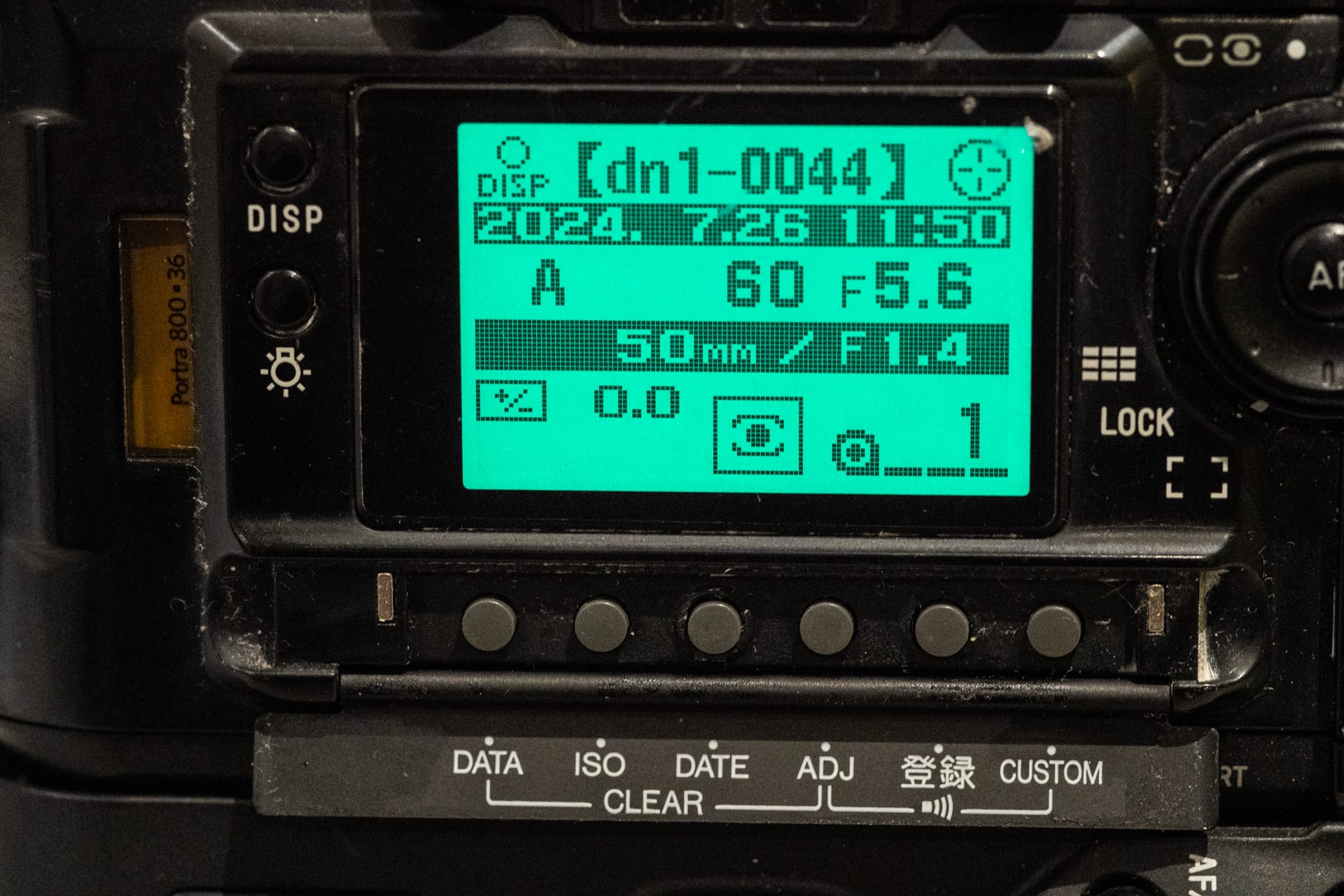
Switching between detailed and list views is done using "DISP" button.
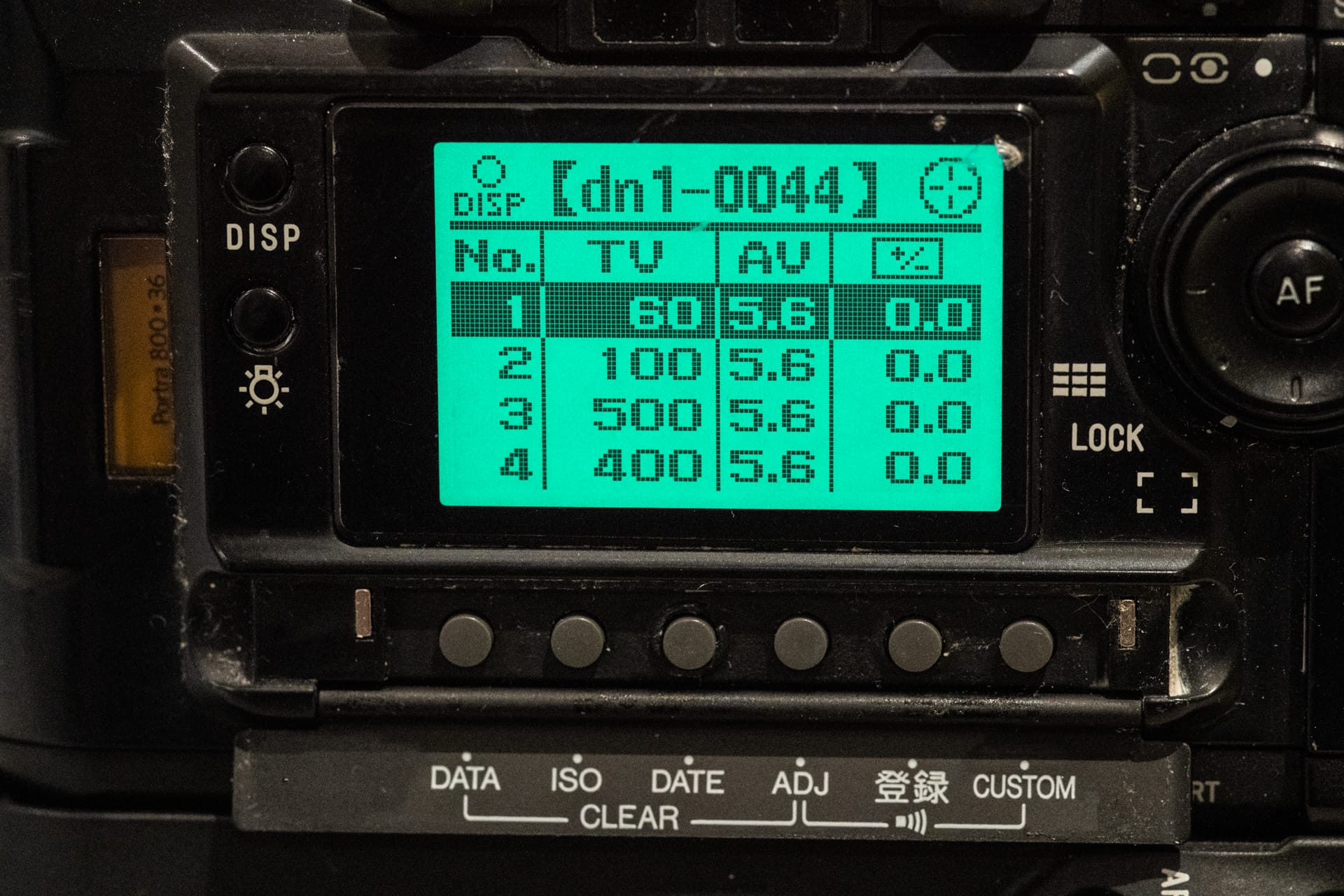

Worth of noting, Alpha 7 retains exposure data in its internal battery for few weeks or months if batteries are removed from camera. Save early, save often as the saying goes.
Minolta DM-9
DM-9 has the broadest set of the parameters on Minolta cameras. Launched simultaneously with Minolta’s comeback to the professional space, the ultimate α9, in 1999. When introduced, DM-9 commanded a price tag of $830 USD (or 68,000 JPY).
Current prices in eBay and Japanese online stores move between 150-200 USD (2024), cheapest option is to buy camera with DM-9 than separately.
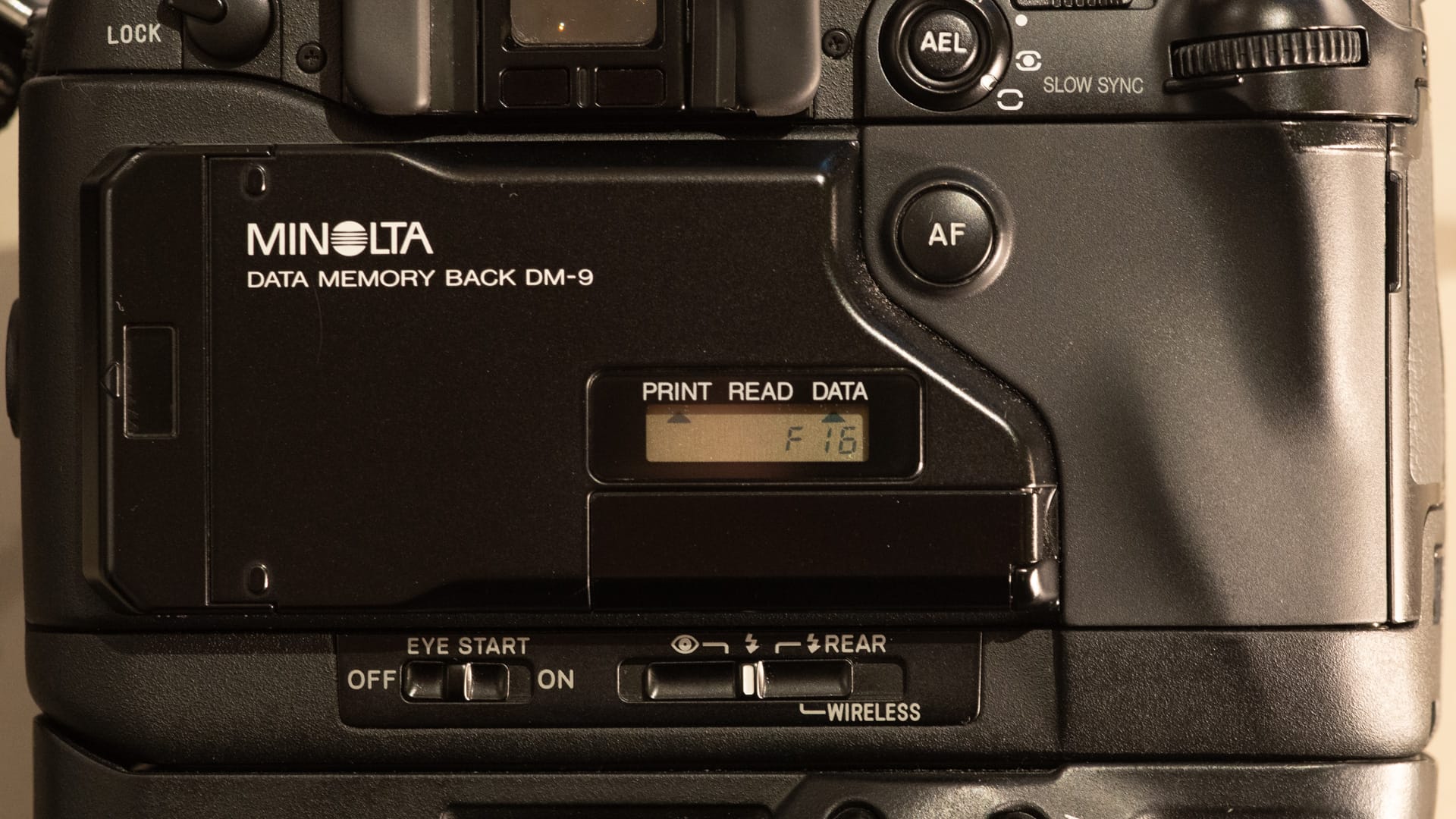
Device supports 3.3V SmartMedia cards up to 16 MB and communicates via pins located within film back and camera body.
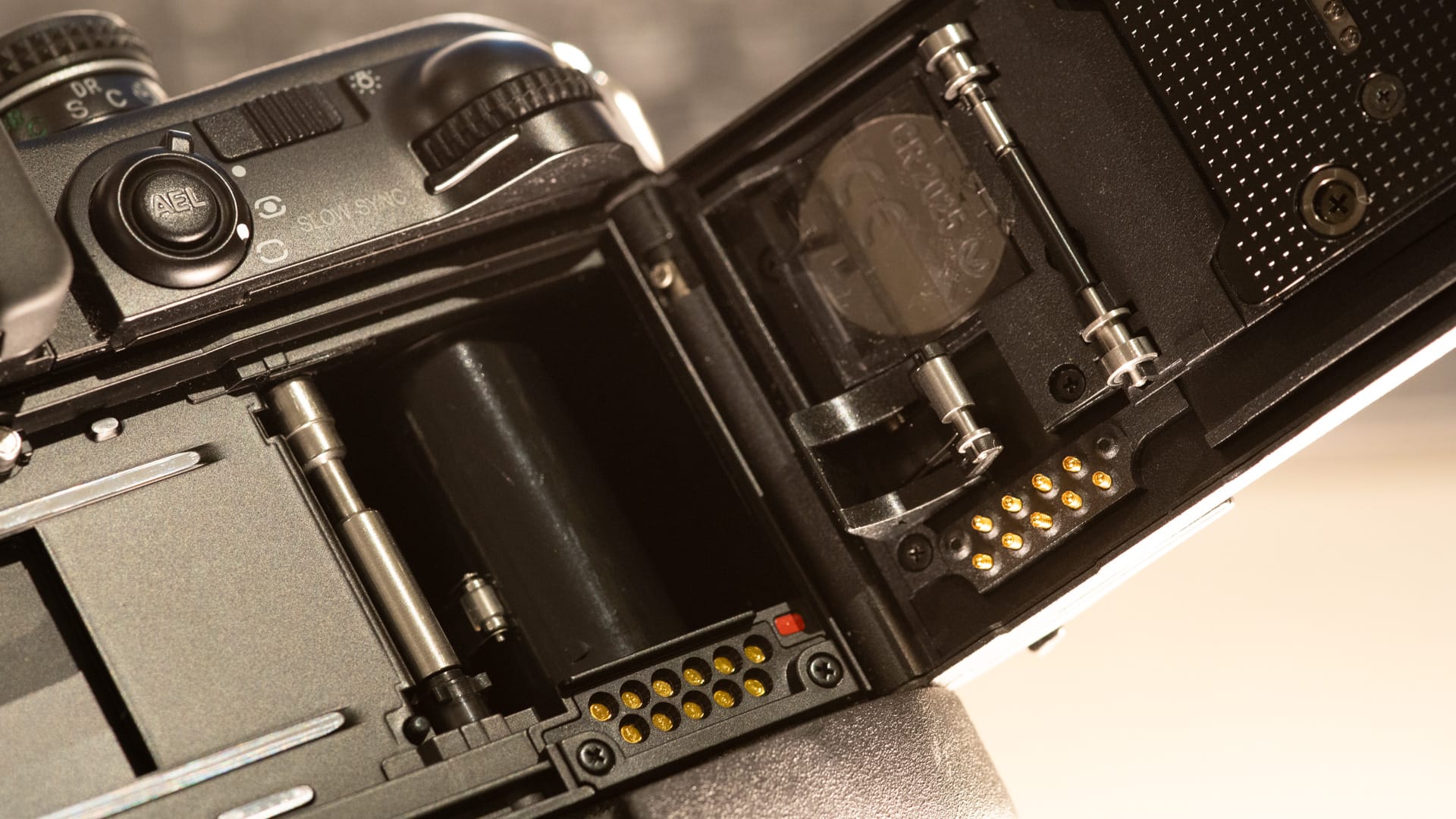
Installation
Installing the DM-9 to the camera is a breeze and shows how much thinking Minolta engineers put into designing the camera.

Installing and removing film back on Alpha 9 is just a question of pulling down a latch and positioning pins of the back to hinge on the body. This's how it should've been on the Alpha 7 for maintenance purposes.
Parameters
DM-9 adds following additional parameters:
- Maximum aperture for lens
- Autofocus Mode
- Focus Frame
- Focus Priority
- Drive mode
- ISO value
- Date and time

Storage
2MB and 4MB cards will hold maximum of 400 rolls, whereas 8MB and 16MB will have space for 900 rolls.
Example output
DM-9 outputs a simple TSV (tab separated values) text file in txt format.

DM-9 also imprints a film identifier to film leader (dno-xxxx), and has the option to imprint exposure data between the frames. This, I personally, regard one of the best features of the data back.
Notes to future owners
Expect to have the Minolta supplied 2MB by fried up at this stage and find a working card either from eBay, Yahoo! Auctions Japan, Aliexpress or from local sources. SmartMedia cards, particularly at the lower end of the storing space are harder and harder to source.
DM-9 writes the exposure information immediately to the SmartMedia card when the roll is completed, removing the need to constantly backup information. This provides the major functionality difference to the DS-100, mentioned in the next chapter.
Minolta DS-100
DS-100 was launched simultaneously with Minolta Alpha/Dynax/Maxxum 7 in 2000. Launch price was 25,000 JPY MSRP (~230 USD at date) in Japan, I got mine for 35 EUR in 2024.
Supports SmartMedia cards up to 32 MB (1900 rolls), note that you need to write information to the card manually, Alpha 7 will not store more than 7 rolls of film data (see usage).
Installation
Installation is done as with any other lens as DS-100 attaches to the lens amount and communicates with a7 via 8-pin lens connector. You need to turn on the camera for DS-100 to power on.
Usage
To write information on SmartMedia card just press "Write" button for 3 seconds and wait for roughly between 50 to 70 seconds. A7 will display a status screen for storing the information.
Good practice for DS-100 owners is to regularly extract exposure information from the camera before the 7 roll data is being written over and lost forever in the digital / analogue space of early backup procedures. Compare this to Alpha 9's DM-9, which writes data immediately when the roll is finished.

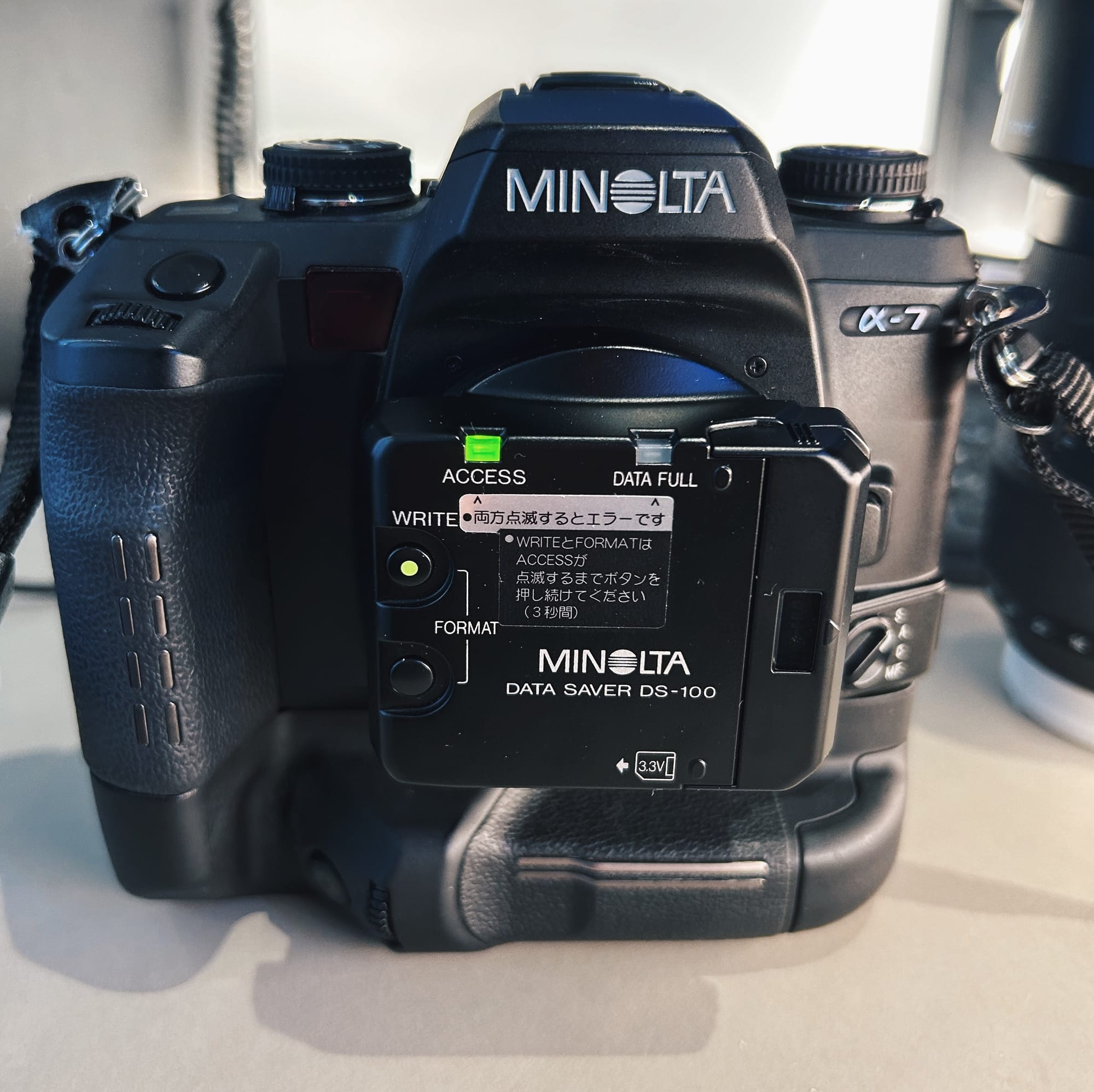
Example output:
DS-100 outputs a simple TSV (tab separated values) text file in txt format

Notes to future owners
Expect to have the Minolta supplied 2MB by fried up at this stage and find a working card either from eBay, Yahoo! Auctions Japan, Aliexpress or from local sources. SmartMedia cards, particularly at the lower end of the storing space are harder and harder to source.
EXIF data insertion to images
There are two perl scripts available for DS-100 / a7 and DM-9 / a9 respectively, as commercial Meta35 software can automate this as well.
The scripts are available at https://github.com/VSF1/minolta2exif, courtesy of William Brodie-Tyrrell and Vitor Fonseca.
Closing words
Should you choose to utilize exposure information using Minolta's data saving capabilities, the good ol' pen and paper method or not caring at all, it is remarkable to pay attention on how much things did evolve during the Minolta AF cameras in relatively short time.
Yes, Canon had ES-E1, Nikon had MV-1 Data Reader for F100/F5/F6 but Minolta was ahead of the game already back then.
Additional insight
More on the subject is available in my continuation article of managing the archival process: Archiving Film - EXIF data matters.
Follow my Threads account for your daily dose of photos.
